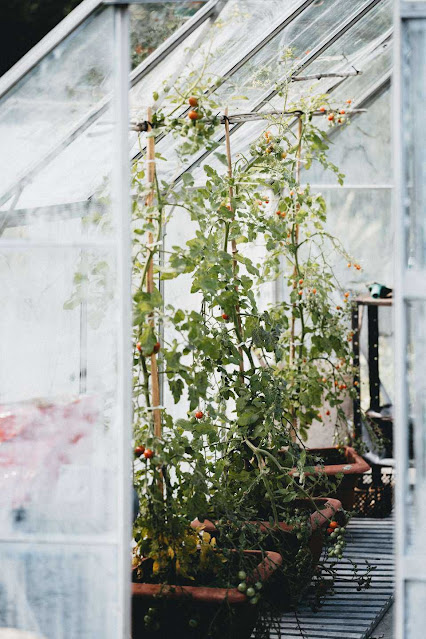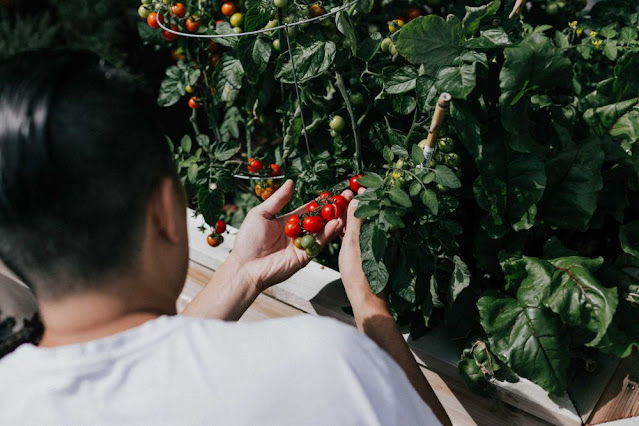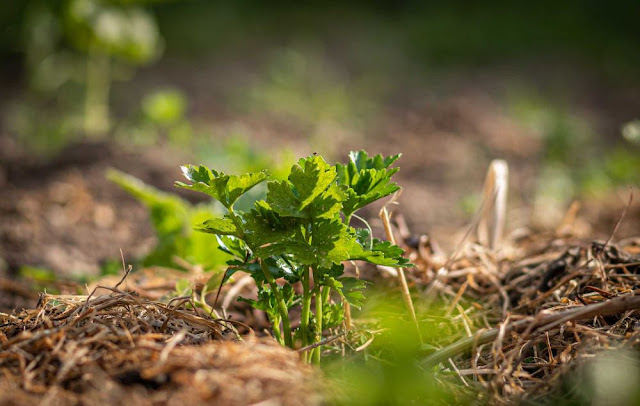Steps for how to grow tomatoes in pots -Do you want to grow your own tomatoes at home but are hindered by limited land because you live in an apartment or house with a minimalist yard? If so, why not plant it in a pot? Actually, this agricultural cultivation technique has been done for a long time, it's just that incomplete information makes not a few fail to grow tomatoes in pots. Therefore, let's learn how below, yes.
Steps for how to grow tomatoes in pots
1. Choose the right variety
 |
| cherry tomato illustration (pixabay.com/eminens) |
Actually, tomatoes are not small plants, the height can reach 3.5 meters depending on the variety. Very tall, right? That is why the selection of tomato varieties is very important.
Choose tomato varieties that are suitable for pots such as cherry tomatoes, vegetable tomatoes, champion tomatoes, micro tom tomatoes, Sungold tomatoes, and others. So that you don't make the wrong choice, before buying it, you are expected to read the description on the label, yes.
2. Selection of pot containers
 |
| illustration of a tomato plant in a pot (unsplash.com/Llio Ang) |
Even if you have found a tomato variety that is suitable for your pot, you also need to pay attention to the size of the pot. Some tomato varieties such as Micro-Tom only grow to a height of 30.5 cm so a 15 cm diameter pot will suffice. But this will be different with the Sungold which reaches 2 meters high, of course, you need a large five to seven-gallon pot, according to the Savvy Gardening page.
Along with finding the best tomato variety, you also need to adjust the size of the pot. So, after determining which area in the house to be used as a place to plant tomatoes. You need to estimate what pot is suitable for that area. After finding a suitable pot, you can adjust it with the tomato variety that fits the pot.
It would be very nice if it turns out that you can have many varieties of tomatoes in your beautiful pots, yes. Even so, you still need to pay attention to the drainage holes in the pot.
Tomatoes are plants with good drainage, if you find that the pot only has one drainage hole, this is a sign that you need to add more holes. If it turns out that the pot you have is made of plastic or wood then you will easily make holes with a drill. But it will be easier if you use a pot made of plastic or cloth that is more flexible.
3. Use suitable growing media for tomatoes
 |
| illustration of tomato growing media (unsplash.com/Annie Spratt) |
The next step is to fill the pot with high-quality and nutritious planting media or compost. Fill it up to a height of 2.5 m below the rim of the pot. If you just use regular garden soil, the pot will become heavier and overcrowded.
Now you can grow tomatoes. You have to remember that if you want to plant tomato seedlings, first remove the set of leaves at the bottom. After that, dig a hole in the planting medium with a soil fork or a deep shovel so that you only see the top leaves after planting. This deep planting can make tomato roots healthy and strong, you know.
4. Prepare the supports to support the tomato stems
 |
| illustration of tomato stem support (unsplash.com/Annie Sp) |
Some varieties of short tomatoes do not require support in the form of wood or bamboo (a tool to keep the tomato stems upright) to grow. But, for tall tomato varieties, you need it.
This assistance is needed so that the tomato stems can remain upright and not make them touch the ground. In addition, the supports can also support the load of the plant and prevent the stems from breaking when the tomatoes get bigger.
5. Put it in a sun-rich area
 |
| illustration of a tomato plant (pixabay.com/lukasbieri) |
Tomatoes are known as sun-loving plants. Therefore, place the tomato pot in a 'hot' area such as a balcony, deck, or terrace that is exposed to at least eight hours of sunlight every day.
However, if your house or apartment is in an area with minimal lighting, avoid large-fruited tomato varieties that require sunlight to ripen.
In this case, you can grow cherry tomatoes that need only about four or five hours of light.
6. Consistent watering
 |
| illustration of a wet tomato plant (pixabay.com/kie-ker) |
Tomatoes contain 95 percent water, so the watering process is important for producing fruit and making the fruit taste fresher. If the watering is not enough, the plants will wilt. On the other hand, excessive watering will cause root rot.
Meanwhile, inconsistent watering can make the fruit crack. That's why watering consistency is important when you grow tomatoes.
7. Add fertilizer regularly
 |
| illustration of caring for tomato plants (unplash.com/Priscilla Du) |
Tomatoes are plants that require regular fertilization to produce a lot of fruit. Make sure the tomatoes have stable nutrients such as phosphorus, nitrogen, and potassium.
You also need to put organic tomato fertilizer into the planting medium before filling the pot. You will also need to apply liquid organic fertilizer every two or three weeks during the growing season.
See other articles:
- How to make a garden in 6 easy steps & 12 plant designs
- 14 Pictures of Indoor Ornamental Plants With Names
- 10 Recommended Indoor Ornamental Plants, Make Your Home Healthy and Beautiful!
- 9 Small Garden Inspirations in the House, Minimalist and Refreshing!
- 12 Best Container Garden Ideas
8. Add mulch to keep the growing media moist
 |
| illustration of mulch on a celery plant (pixabay.com/AndreasGo) |
If you are afraid that the moisture in the tomatoes will quickly disappear, you can use a mulch to prevent this. From the Spruce page, mulch is a material used to cover the soil surface to keep it moist. Usually, mulch is made of wood fiber, dry grass, small twigs, or a layer of plastic.
Not only does it retain moisture, but it can also reduce problems with weeds, prevent fruit and leaves from coming into contact with the soil, and prevent the soil from compacting. For natural mulch, apply a layer of at least 5 cm above the soil around the tomato plant. You can change the mulch every few weeks or months depending on the type of starter you use.
The key is to consistently care for tomatoes, which are fairly fragile fruit and vegetable plants. Even so, high nutrition, beautiful fruit, and a refreshing taste make tomatoes worth keeping.
